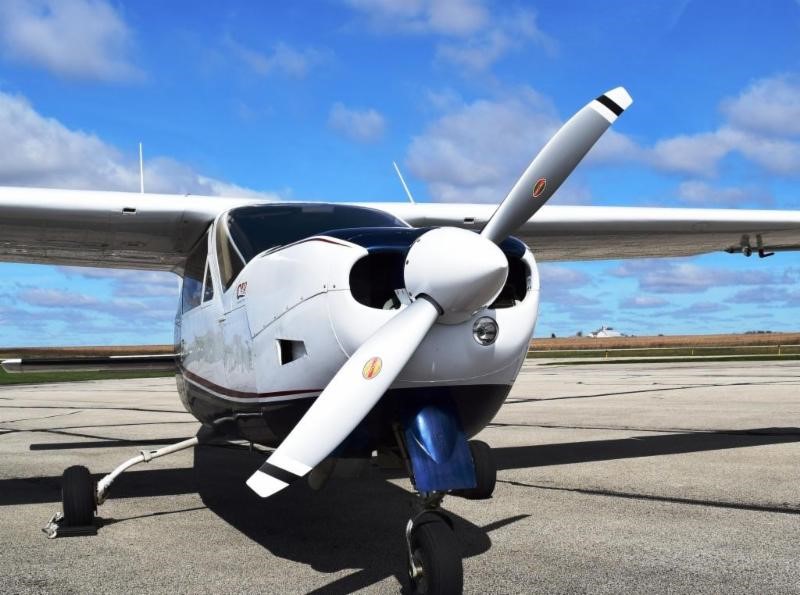
A prop strike is something that no pilot wants to experience. But accidents can and do happen. Understanding how prop strikes occur and what you can do to prevent them will help you avoid potentially dangerous — and expensive — situations.
The good news is that many prop strikes are preventable by practicing caution and situational awareness. Here are some basic tips for avoiding prop strikes:
Prop strikes can occur even when the engine isn’t running. Be aware of your surroundings whenever you’re moving your airplane, especially in a crowded hangar. Anything that comes in contact with your prop or spinner – another aircraft, a hangar door, a golf cart — could cause significant damage.
Towbar strikes are prevalent but easily preventable. A good rule of thumb to follow is that if the towbar is on your airplane, your hand is on the towbar. It’s well worth doing a final walk-around of your airplane after preflighting to ensure the towbar is not still attached.
Before flying, ensure the tires are properly inflated, especially if you have a tight prop-to-ground clearance. As you taxi down the runway, scan for potential obstructions in your path, such as rocks, signs, safety cones, snowdrifts, potholes, and even puddles, which may hide imperfections in the runway. When landing on unpaved dirt and gravel runways or soft-field airstrips, a backcountry prop with good clearance is critical. Equipping your airplane with large, bush wheel tires will also help keep the nose high and limit the chance of a prop strike in unforgiving backcountry environments.
Birds, deer, dogs, cats, coyotes, raccoons, and even turtles — there’s a wide variety of wildlife that can pose a prop strike risk during takeoffs and landings. Pay special attention in the early morning and evening hours, when animals tend to be more active and harder to see.
Poor aircraft control while landing is one of the most common causes of prop strikes. That’s why it’s so important to know what to do in the event of a ground loop, porpoised landing, nose-gear first landing, and other landing mishaps. Challenging yourself to practice different landings will boost your confidence and proficiency.
Propeller-to-person strikes are rare, but when they do occur, they can cause serious or even fatal injuries. Take the time to educate new passengers and bystanders about the dangers of walking into rotating propeller blades, especially at night when the prop is less visible. At Hartzell Propeller, we encourage aircraft owners to choose a propeller paint scheme with blade-tip markings in contrasting colors to enhance the visibility of the spinning prop.
When in the vicinity of the propeller, pilots are advised to assume the ignition has been left in the “on” position and that the engine could start at any moment. Before touching the prop, always ensure the mags are off to avoid the risk of an unexpected start or backfire. If you need to exit your aircraft for a short period, perhaps to refuel, the best practice is to remove the key and place it on the dash for everyone’s awareness.
If anything strikes your propeller, stop what you’re doing and have it inspected by an expert. Even if the damage seems “minor,” a strike can still cause internal damage that could lead to engine failure later on. Under no circumstances should you try to straighten bent propeller blades yourself. Depending on the condition of your prop, it may need to be removed, disassembled, and overhauled by a certified propeller repair station. As with most things in aviation, it’s better to be safe than sorry!
If you have any technical questions about your Hartzell propeller, we’re always happy to help. Get in touch with our technical team by emailing techsupport@hartzellprop.com.